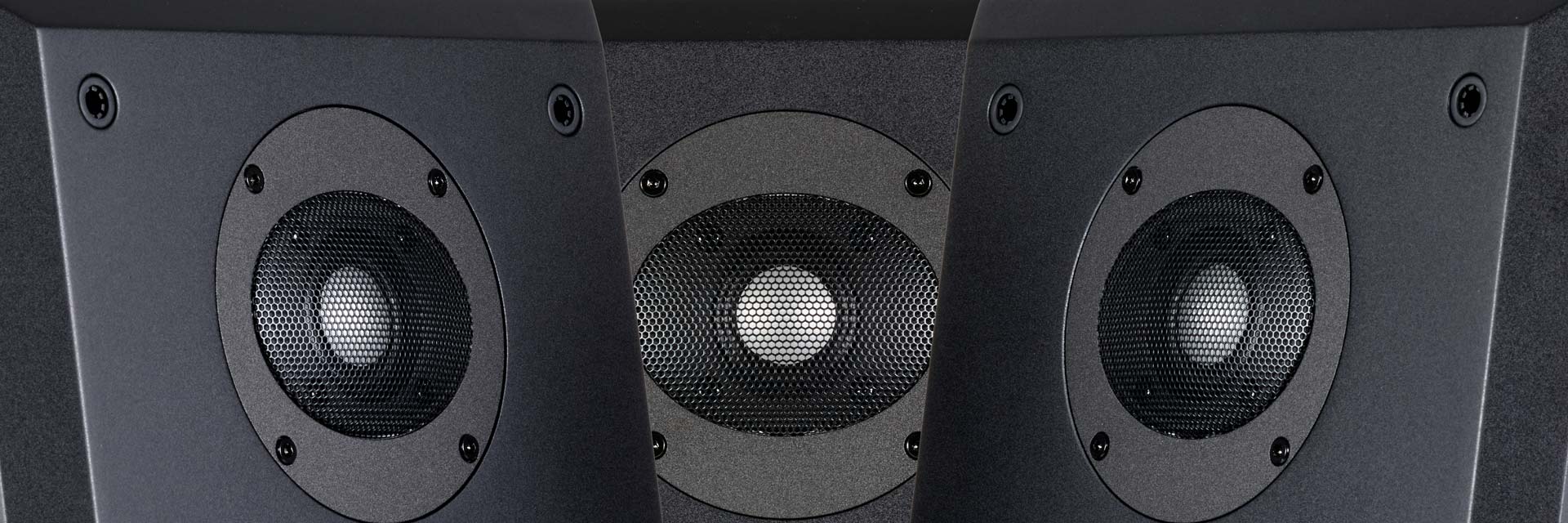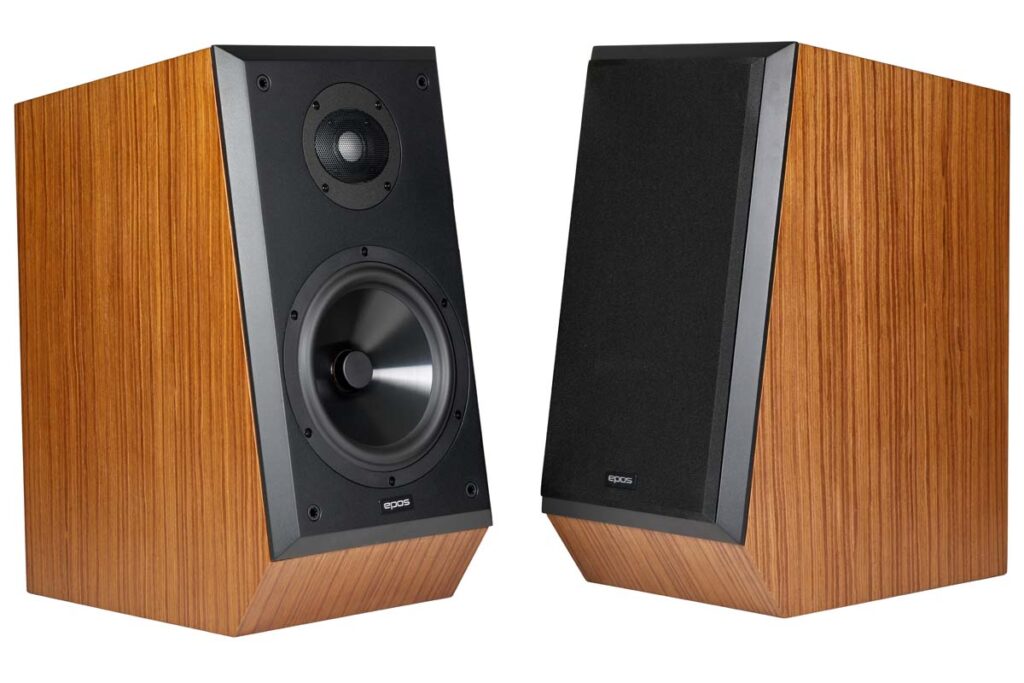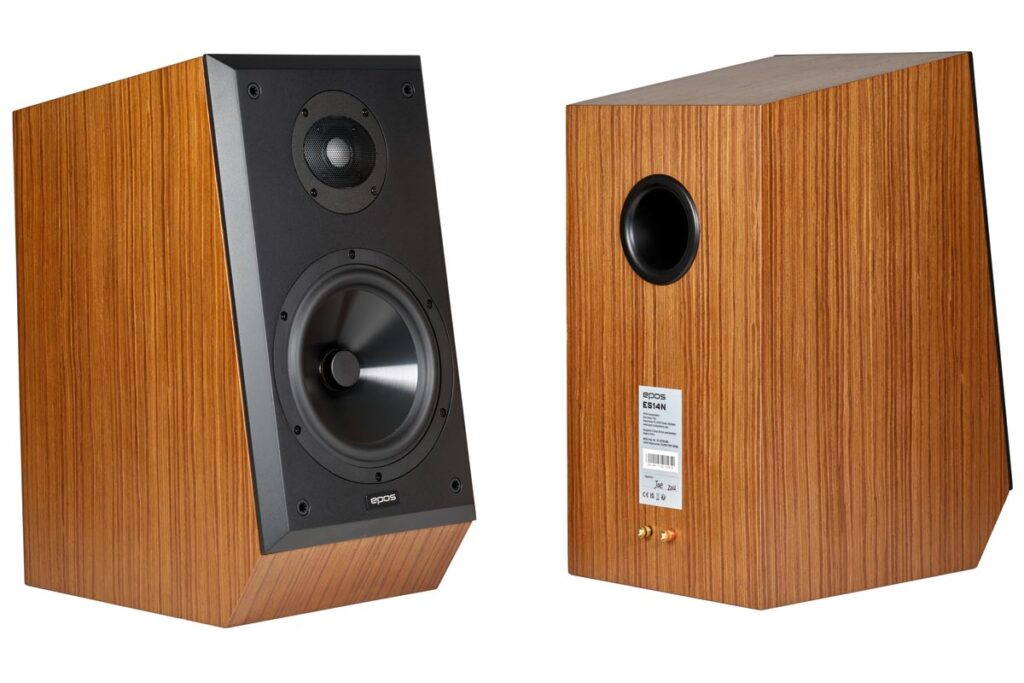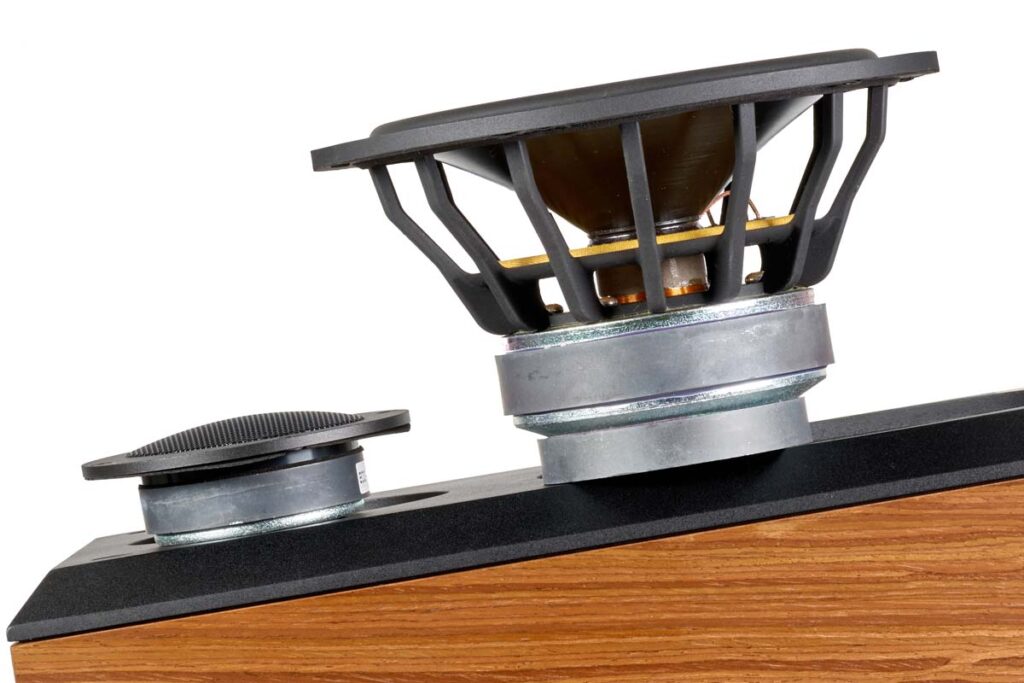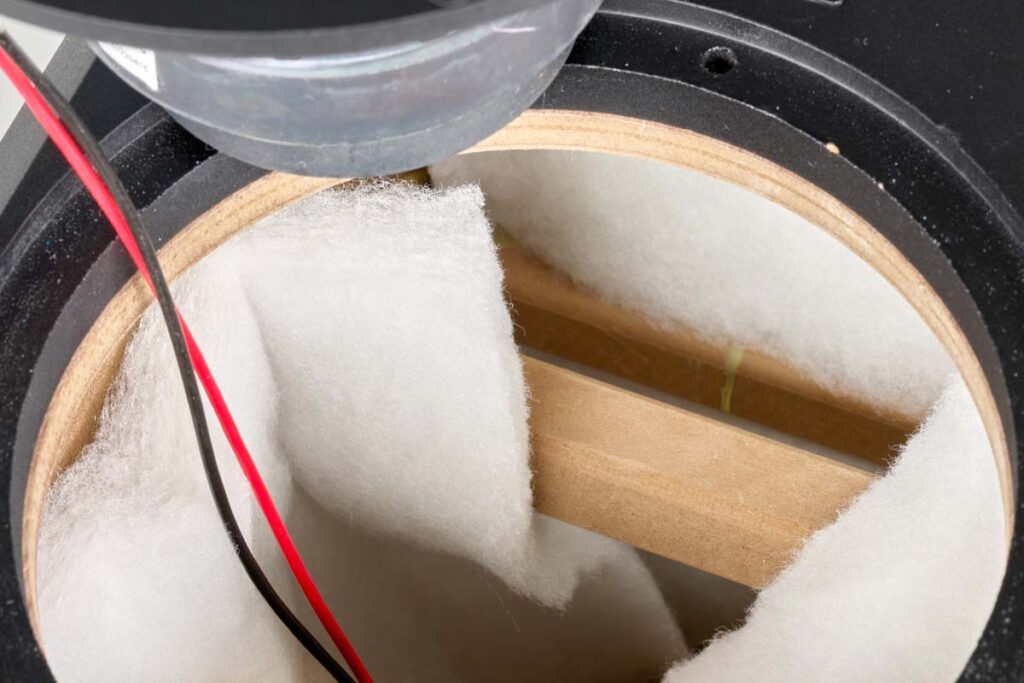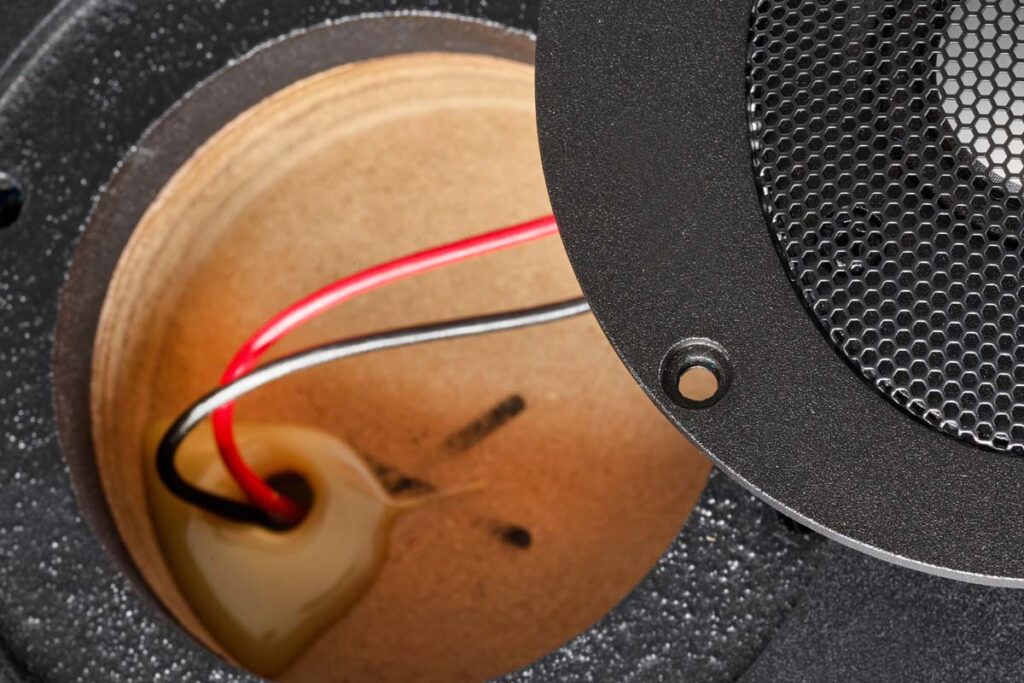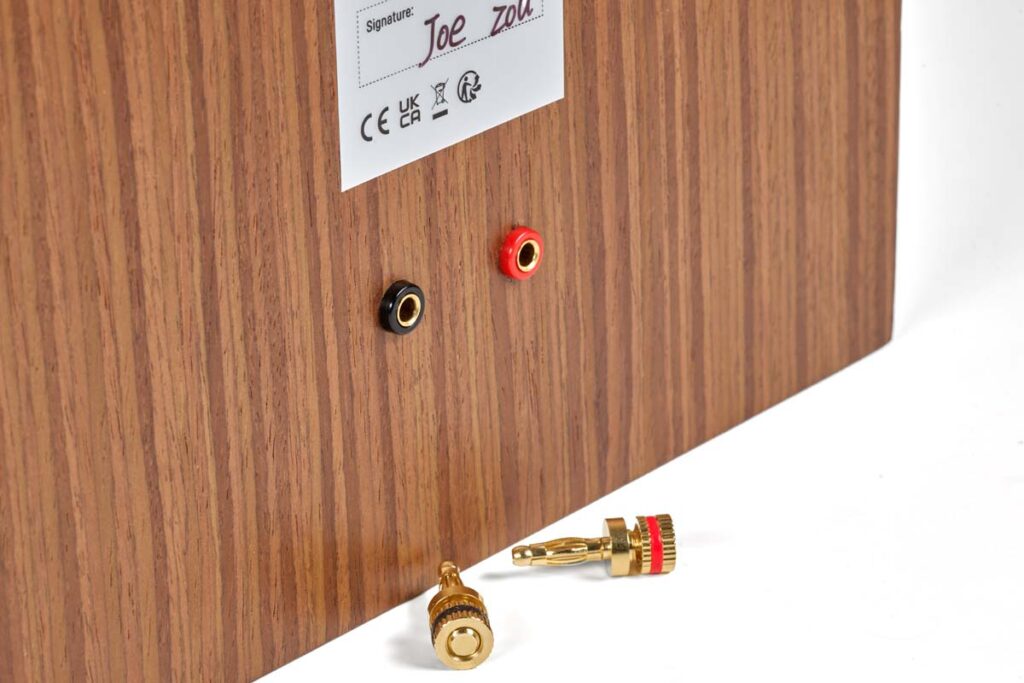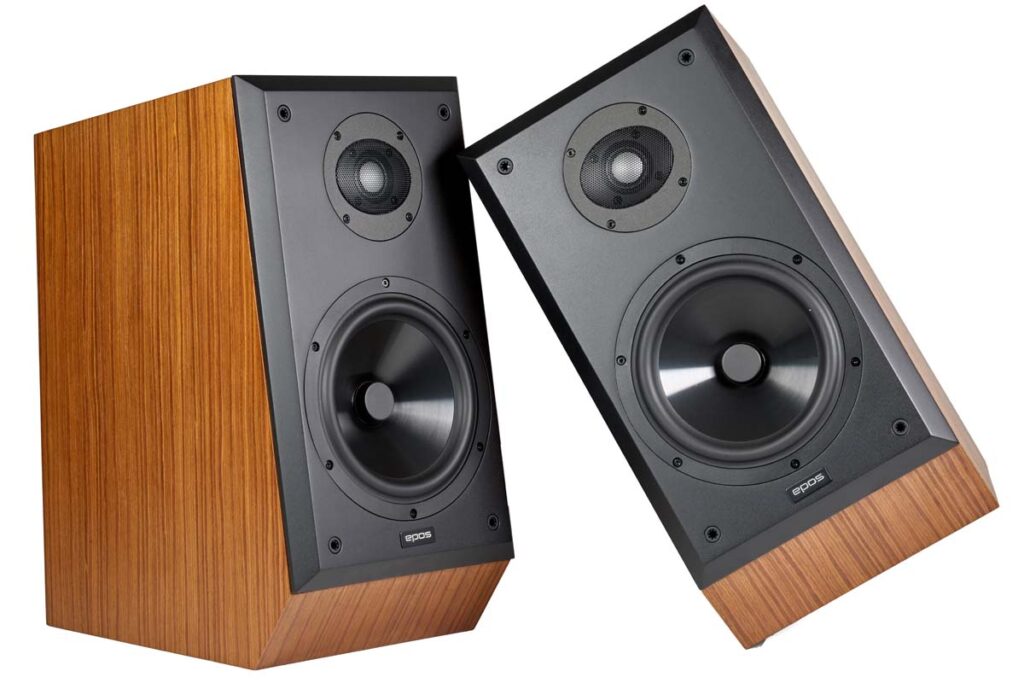FinkTeam‘s reinterpretation of the legendary EPOS 14 is a powerhouse of dynamics and a flagship loudspeaker in terms of sonic fidelity.
Around 2020, Karl-Heinz Fink acquired the Epos line from Michael Creek. He seized this opportunity to establish an independent brand called “Epos made by FinkTeam” in a price range below the Borg and Kim models. His driving question was how to balance between tradition and innovation, or whether a balance should be maintained at all? After all, Epos – and the Epos 14 in particular – still had many followers of Robin Marshall‘s ideas.
The brand was founded by Robin Marshall in 1983, and he had differentiated from the traditional British method established by the famous BBC-influenced designs. Marshall used a rarely used metal dome as a tweeter, and the widely used high damping polypropylene cone for a mid-bass driver. But his special feature was dispensing with a conventional crossover. Only a capacitor was inserted in front of the tweeter as a filter, with a resistor for volume adjustment. In our conversation, Karl-Heinz Fink told us that he was unenthused about following the rules in the 1980s. However, by chance he discovered an old interview with Robin Marshall in which he was anything but a conservative traditionalist. The interviewer clearly wanted confirmation from Marshall that all his work had been magical. Surprisingly, Robin Marshall‘s answer differed: he explained that the speakers had been developed from the knowledge and ideas available at the time, and that these were not set in stone. This seemed to be the way to push the boundaries without “betraying” the former brand essence and not simply copying the past.
More innovation than tradition
Anyone who is as familiar with the original Epos speakers as they are with Karl-Heinz Fink‘s current products will quickly realize that the Epos made by FinkTeam is closer to a Kim or Borg regarding its basic tuning than to the English original. And that‘s a good thing! Here I follow Fink‘s development philosophy to the letter: why revive a sound and an associated sound level that set standards in its day, but in 2023 is technically and sonically long outdated? And yet, from a technical perspective, some design ideas have remained that FinkTeam decided not to throw overboard. In addition to the metal dome in the tweeter and the polypropylene cone of the bass-midrange driver, there is above all the typical hybrid size – too large to place the Epos compactly on a shelf, and too small to be a floorstanding speaker. This is why both the old and the new model must be placed on stands. The cabinet has essentially the same volume as the original ES 14. This is no great surprise, as the cabinet volume results from the driver configuration and the defined bandwidth of the speaker.
However, the cabinet shape differs. The front baffle is tilted backwards to time align the woofer and tweeter and support the standing wave between the front and rear. The reflex system opening is at the rear of the cabinet, and the shape of the opening was chosen to minimize airflow noise. Here, FinkTeam has taken inspiration from the Borg and Kim model designs, and more or less imported the reflex system from there. The additional front panel is glued and screwed onto the main enclosure. It has a 45-degree chamfer to control the diffraction effect in the two to three kilohertz range. The binding posts are four-millimeter banana jacks mounted on a metal plate. These banana jacks use very little metal internally to ensure the best sound – one of the nice ideas of the original design and better than using expensive “high-end” terminals with little metal but a high price tag. As always with Karl-Heinz Fink and his team, it‘s the result is more important than the external aura.
Music and only music
As for sound, the Epos immediately strikes a big impression. Nothing reminds you that we‘re officially dealing with a “standmount speaker”, neither in terms of image size nor dynamics. In my nearly 30 square meter floor space listening room, I can‘t tell any difference to the full-size floorstanding speakers that have been playing here recently. However, the Epos is anything but a slim lifestyle product in terms of volume and overall design. The four members of the New World Saxophone Quartet, led by Oliver Lake and David Murray, fill the stage at a large scale, the baritone saxophone rumbles mightily in the bass cellar and then the soprano and alto saxophones climb crystalline heights. The Epos throws this live performance into the room so casually, oscillating between experimental shreds of sound and kitschy Hollywood sequences, that you immediately sense a touch of club atmosphere. However, what’s special is that the musicians are not directly in the listener‘s face. Instead, at first it seems the four saxophonists are taking a step backwards, only to move more freely, relaxed and, if necessary, to push forward dynamically. Admittedly I first found this sound aesthetic somewhat unusual, albeit very harmonious. Most loudspeakers that I associate with a dynamic live sound play to the front, stepping towards the listener. This can make longer listening sessions exhausting. But it is completely different with the Epos, as liveliness and suitability for long listening sessions are not contradictory here.
Perhaps this is also the reason why I liked Yello‘s “The Expert” so much. With its crisp, precise bass, Boris Blank‘s synthetic sound concept filling the room and Dieter Meier‘s sonorous yet uncolored voice, the track grooved through the room while remaining suitable for the living room. At no point did the Epos ES14N attempt PA system-imitation, which quickly becomes acoustic overkill at home. No, at FinkTeam they know exactly how the acoustic possibilities of a loudspeaker must be set according to the acoustic conditions of a living room, in line with Karl-Heinz Fink‘s motto that loudspeakers are for music listening, not frequency response reproduction. I have just heard the phenomenal recording Oriental Landscapes by percussionist Evelyn Glennie, on which she plays percussion concertos by Asian composers. If a loudspeaker does not leave enough air between the voices and cannot clearly separate similar-sounding instruments, then the percussion of this recording is quickly dismissed as “something with skin” or “something with wood”. Yet here, despite Glennie‘s wild playing, you hear a massive color palette of tonal nuances that draw you deep into the musical vortex of these unusual compositions.
Courage that is rewarded
My first serious loudspeakers were a pair of Mission 782s, also slightly oversized “compacts” that belong on a sturdy stand. Perhaps that’s why I‘m still in love with this two-part loudspeaker concept. In this respect, I may have been somewhat biased going into the two-week listening session with FinkTeam‘s retro reworking. But it was more than surprising that this concept, familiar to me from the 90s, can sound so ultra-modern and in tune with the technical and sonic standards of 2023. On the other hand, you know that when Karl-Heinz Fink and his team lean into their skills, it always results in a loudspeaker from the here and now. You may be skeptical about this loudspeaker design – either because there is too much or too little epic in the concept. But forget your prejudices and misgivings, and perhaps simply forget the name Epos and its mythology. Just listen to the new Epos at your trusted dealer, which offers the know-how of the FinkTeam at a reasonable price. You won‘t regret it!
Accompanying Equipment
Turntables: Thorens TD 126 MK III, Technics SL-1210 MK2 | Tonearm: Koshin GST 801 | Cartridges: Sumiko Blackbird, Ortofon Concord Century | Phono preamplifier: Innovative Audio Ultimate 2b, Thel Phono M | CD player: Naim CD 5i | Streamer: Naim CD5XS | Integrated amplifier: Naim SuperNait | Speakers: Gamut Phi 7 | Headphones: Beyerdynamic DT 1770 Pro | Accessories: Wireworld, Sommer, Creaktiv
Loudspeaker Epos ES14N
Concept: 2-way standmount loudspeaker with optional stands | Frequency range: 40 Hz to 23 kHz (-6 dB); 33 Hz to 25 kHz (-10 dB) | Impedance: > 6 Ω | Sensitivity (2.83 V/1 m): 87 dB | Distortion (THD@1 W): 0.2 % | Crossover frequency: 2700 Hz | Bass driver: High Power 7″, voice coil diameter 35 mm, hybrid ferrite and neodymium magnet, injection-molded cone with variable thickness and mica filling, low hysteresis rubber surround | Tweeter: 28 mm tweeter with aluminum/ceramic composite dome tweeter without ferrofluid | Finishes: Walnut, white semi-gloss, black semi-gloss | Dimensions (W/H/D): 25/49/39 cm (without stands) | Stand height: 52 cm | Weight: 16 kg (without stands) | Warranty period: 5 years | Price per pair: around 4000 € without stands, around 4600 € with stands
IDC Klaassen International Distribution & Consulting oHG
Am Brambusch 22
44536 Lünen
Phone +49 231 9860285
idc@idc-klaassen.com

